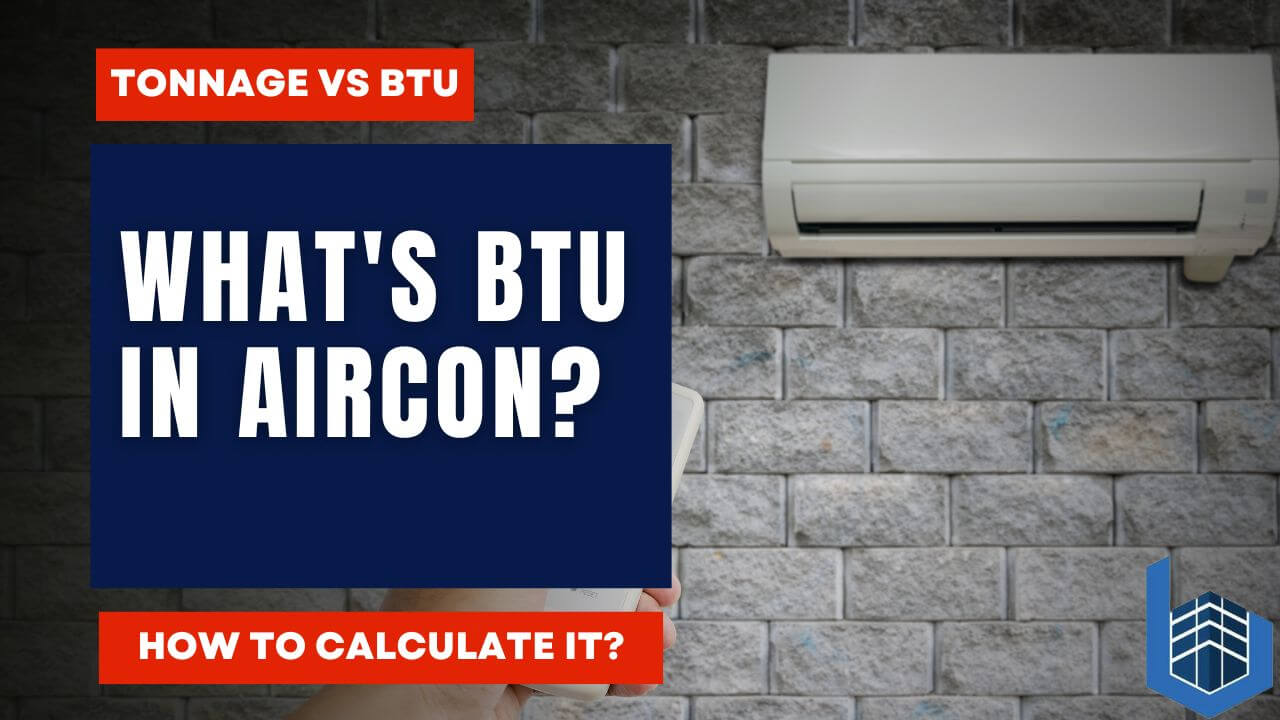
Everyone knows how hot and humid Singapore can get. Because of the climate conditions, having a functioning aircon is a must. When choosing the right aircon, understanding BTUs can help choose the right air conditioning unit and save money in electricity bills. Let’s discover what BTU means in aircon and how to calculate BTU correctly to choose an aircon with the right capacity.
What Does BTU Mean in Aircon?
BTU is an acronym of British Thermal Units which measures energy expenditure in an air conditioner. Put simply, BTU determines how much heat a particular air conditioning unit can remove from the space over the course of an hour.
An easier way to put it:
BTU rating is proportional to the cooling power of an aircon. The higher the BTU, the stronger the cooling power of the aircon.
For example, a 9,000 BTU aircon can remove 9,000 units of heat from the room in one hour.
Why is BTU Important in Singapore?
Singapore’s weather is hot and humid. Here, the average daily temperature ranges from 26°C to 32°C. This heat, along with high humidity, makes cooling more difficult. That’s why knowing the right BTU helps the users determine their needs and choose the right aircon.
If the BTU is too low, the aircon will struggle to cool your space. If it’s too high, the room may cool down too fast, without removing enough humidity. It will make the room feel cold but sticky. Additionally, it will be a waste of energy.
Choosing the right BTU means:
- Better comfort
- Faster and even cooling
- Less energy use
- Lower electricity bills
How to Calculate Your BTU
To calculate the BTU requirement, follow below process:
- Measure your room size in square feet (Length × Width).
- Use a BTU chart to find a base BTU.
- After having the base BTU, adjust the requirement for sunlight, electronics, number of people, and floor level.
You can also consult with an aircon installer before buying the aircon.
BTU Chart: Choosing the Right BTU in Singapore
Use this chart and match it with your room size to find out the right aircon BTU. It’s designed based on typical HDB, condo, and apartment layouts in Singapore:
| Room Size (Square Feet) | Room Type | Recommended BTU |
| Up to 90 sq. ft. | Small study, maid’s room | 6,000 BTU |
| 90 – 120 sq. ft. | Small bedroom | 7,000 – 8,000 BTU |
| 120 – 180 sq. ft. | Standard HDB/condo bedroom | 9,000 BTU |
| 180 – 250 sq. ft. | Master bedroom | 12,000 BTU |
| 250 – 400 sq. ft. | Small living room | 18,000 BTU |
| 400 – 550 sq. ft. | Large living room | 22,000 – 24,000 BTU |
| 550 – 800 sq. ft. | HDB 3-room flat (combined cooling) | 28,000 – 30,000 BTU |
| 800 – 1,000 sq. ft. | HDB 4/5-room flat (whole house) | 32,000 – 36,000 BTU |
Note:
- Add 10% more BTU if the room gets direct sunlight in the afternoon.
- Add 600 BTU for each extra person beyond 2 people in the room.
- If using heat-emitting electronics, add around 500–1,000 BTU.
Factors to Consider to Determine BTU Needs
1. Sun Exposure
Rooms that face the sun during midday and in the afternoon tend to become warmer. Therefore, increase the BTU value by 10% for the case.
2. Floor level
People living at higher floors tend to experience hotter temperatures because they receive less shade. They also get more heat from the upper roofs. A stronger air conditioner may be needed in this case.
3. Number of People
The number of people present in the room will affect the temperature of a room. Therefore, for every additional person after two, increase the BTU by 600.
4. Appliances And Electronics
Usage of various appliances like kitchen gadgets, TVs and laptops generate heat. Extra cooling may be needed in the room if any such gadgets are there.
5. Ceiling Height
Standard ceilings of most flats in Singapore are around 2.6 meters. If yours is taller this means a larger volume of air to cool. Hence, you must need an extra BTU.
6. Insulation
Buildings that are older tend to have poor insulation. If insulation is not proper, heat could easily come through the room. Therefore, you need additional BTU if you do not have proper room insulation.
Air Conditioners in Singapore And Their BTU
1. System 1 (Single Split)
Cool one room. BTU ranges from 9,000 to 12,000. Good for bedrooms or small study rooms.
2. System 2, 3, 4, or 5
These are multi-split systems. They cool 2 to 5 rooms. Each unit may have different BTUs depending on room size.
3. Portable Aircon
Easy to move around. Not very efficient for long-term use. Usually comes with 8,000 to 14,000 BTU.
4. Window Aircon
Less common now in Singapore. Mostly used in older buildings. BTU ranges from 5,000 to 12,000.
5. Central or VRV Systems
They are usually installed in commercial spaces. BTU is calculated based on total area and number of zones.
What Happens If You Choose the Wrong BTU?
Too Low BTU:
- Room won’t get cold
- Aircon will work longer hours
- Higher electricity bill
- Faster wear and tear
Too High BTU:
- Room cools too fast
- Humidity stays making a sticky feeling
- Feels damp and uncomfortable
- Higher cost and energy waste
BTU vs Tonnage
‘Ton’ is also a common term around the world to measure the aircon capacity. Below is the relationship between tonnage and BTU:
- 1 ton = 12,000 BTU
- 1.5 ton = 18,000 BTU
- 2 ton = 24,000 BTU
Final Thoughts
BTU may sound technical, but it’s really simple. It tells you how much cooling power your aircon has. Knowing about BTU will help you choose the right aircon unit for your space. So the next time you shop for an aircon, don’t forget to check the BTU.





